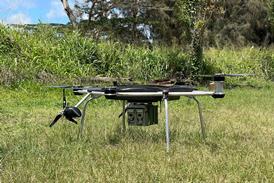A government-favoured project to help make broadband wireless service ubiquitous across the US could interfere with GPS, jeopardize the cornerstone of the Federal Aviation Administration's $40 billion next generation air transportation (NextGen) system, say the Air Transport Association and other aerospace companies.
At the heart of the threat is an innovative project by service provider LightSquared to rebroadcast satellite L-band data and voice communications over a large terrestrial network through a new telecommunications method that would bring terrestrial broadband to 260 million people by 2015. LightSquared launched its SkyTerra-1 communications satellite in November, and plans to launch a second satellite next year.
Increasing connectivity, particularly in rural areas, is a major push for US President Barack Obama, who pledged during his 25 January State of the Union address that within the next five years, the administration would "make it possible for businesses to deploy the next generation of high-speed wireless coverage to 98% of all Americans".
LightSquared on 26 January received a conditional waiver from the Federal Communications Commission (FCC) to rebroadcast the satellite signals using high power transmitters on as many as 40,000 antenna sites around the US. The agency approved the request in less than three months, shocking a US aerospace industry that had requested a notice of proposed rulemaking process to allow for more time to analyse the potential impacts to navigation.
Issues involve the potential for out-of-band spillover between LightSquared's operating spectrum of 1525-1559MHz and the GPS band of 1559-1610MHz as a result of the high power transmitters at antenna sites.
A surveillance and navigation source, GPS has become the baseline for the FAA's NextGen modernisation programme for airlines, as well as the most prevalent form of point-to-point navigation for business aviation, general aviation and the public.
"Indeed, because of the ambitious [FAA NextGen] programme to shift air traffic management to a satellite-based navigation and communications system, GPS will become even more important over the next decade," said the Air Transport Association (ATA) in a 7 January letter to the FCC. "For these reasons, we are extremely concerned about spectrum issues and the possibility of inadvertent interference."
A study prepared last month by Garmin, whose GPS units are installed in more than 43,000 aircraft, 70% of which are in the US, found that aviation units like GNS430W would detect interference, or jamming, more than 22,000m (12nm) from a simulated LightSquared antenna site and loss of positional fix at 5nm. Garmin says its results were conservative, and actual implementation could increase the distances.
The FCC is requiring LightSquared to work with the GPS community to understand the risks. The agency wants an initial report by 25 February and a final report no later than 15 June.
LightSquared says it will organize and lead the study group and commit up to $20 million to the effort, which is to include analysis and testing. "This overload problem [of GPS signals] is not unique to LightSquared's operations," the company said in a 6 January letter to the FCC, defending its waiver request. "Rather, in-band transmissions from licensees using nearby frequencies could have this adverse effect on GPS."
Source: Air Transport Intelligence news
















